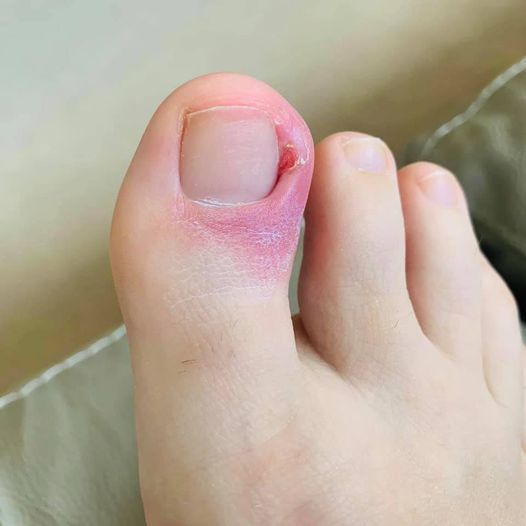Caring for feet in the Winter
Caring for Your Feet in Winter: A Podiatrist’s Guide
As the weather turns colder, many people focus on keeping warm — but your feet often get overlooked. Winter can bring a range of foot problems, from dry, cracked skin to circulation issues. Taking a few preventative steps can make all the difference.
1. Keep Feet Warm — but Not Damp
Cold temperatures can reduce blood flow to the extremities, which is especially concerning for people with diabetes or poor circulation.
- Wear warm socks made from natural fibres (like wool or bamboo) that wick moisture away.
- Avoid socks that are too tight, as they can restrict circulation.
- Change damp socks promptly to prevent fungal infections such as athlete’s foot.
2. Moisturise Daily
Cold, dry air can strip moisture from the skin, leading to dryness and cracking, particularly around the heels.
- Use a foot cream or emollient every evening, focusing on the heels and soles.
- Avoid applying moisturiser between the toes — this area should stay dry to reduce infection risk.
3. Choose the Right Footwear
Winter boots can be protective but may also cause problems if they don’t fit properly.
- Make sure shoes allow room for your toes to move freely.
- Look for waterproof, breathable materials to keep feet dry.
- Check the soles for good grip to help prevent slips and falls in icy conditions.
4. Trim Nails Carefully
Cold weather doesn’t stop nail growth. Keep nails neatly trimmed to prevent ingrown toenails, which can easily become infected if the feet are enclosed in warm, damp environments for long periods.
5. Watch for Circulation and Sensation Changes
People with diabetes, neuropathy, or poor circulation should be especially vigilant in winter.
- Examine your feet daily for cuts, blisters, or colour changes.
- Avoid direct heat sources (like hot water bottles or radiators) — they can cause burns if sensation is reduced.
- If feet often feel cold, consider thermal socks or insulated shoes, and speak to a podiatrist or GP if the problem persists.
6. Maintain Good Hygiene
Even in winter, regular washing and thorough drying are essential. Fungal infections thrive in warm, moist environments such as boots and closed shoes.
- Use an antifungal foot powder or spray if prone to infections.
- Rotate footwear to allow each pair to dry out fully between wears.
7. Professional Foot Care
A podiatry check-up in winter can help identify and prevent issues before they become painful or serious. A podiatrist can remove hard skin, treat cracked heels, check circulation, and give tailored advice for your specific needs.
In summary:
Winter foot care is about warmth, moisture balance, and protection. With a little attention, you can keep your feet healthy, comfortable, and ready for spring.
#podiatrist #podiatry #chiropody #chiropodist #HD8 #dearnevalley #HD9 #holmevalley #huddersfield #barnsley #wakefield #yorkshire




